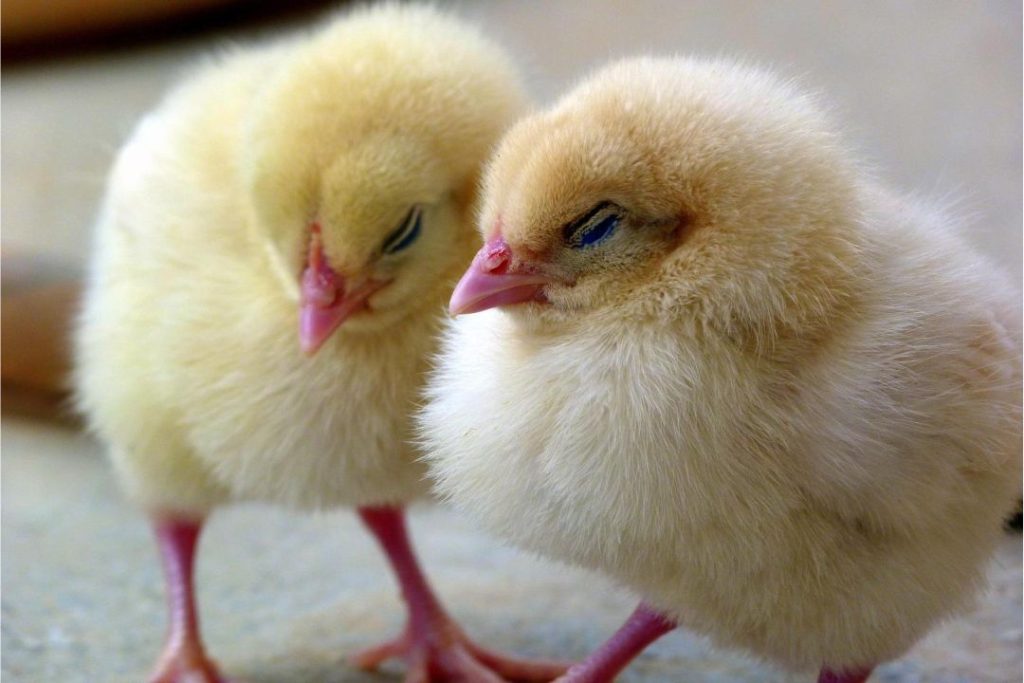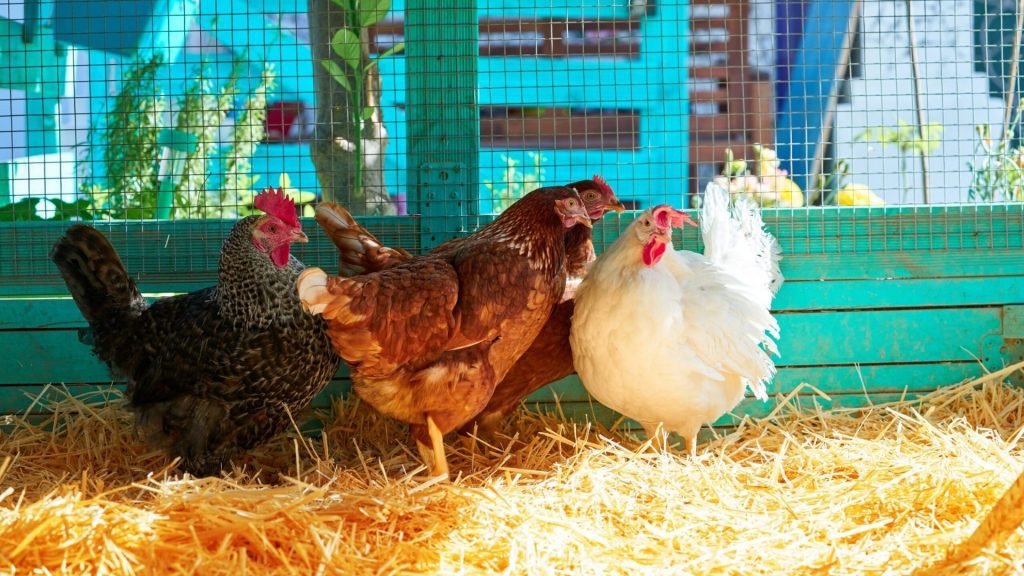If you’re wondering what to do if a chick has poop stuck, it’s crucial to act swiftly to prevent health complications. Begin with a gentle cleaning process. Use warm water and a simple soft cloth to clean the affected area, incorporating a mild soap if necessary.
Ensure to dry the area well after cleaning. Maintaining a clean living environment and providing a balanced diet and fresh water are vital preventive measures. Regular checks can help in the early detection and management of the issue. If the problem persists, seeking veterinary advice is recommended.
Today’s guide will explain what you should do if your chick has poop stuck. So, let’s get started!
How Does The Digestive System of a Chick Work?
Understanding the digestive system of a chick is fundamental, especially when pondering what to do if a chick has poop stuck. Let’s dissect this intricate system step by step to foster a healthy environment for your chick.
From Beak to Crop: The Beginning of the Digestive Journey
The crop serves as a temporary storage space. It allows your chicks to quickly consume larger quantities of food, a necessary adaptation in the wild to avoid predators while feeding.
The Stomach: A Two-Part Powerhouse
The journey continues as the food moves from the crop to the stomach, a complex organ divided into two parts. Those are the proventriculus and the gizzard. The proventriculus is where the food first encounters digestive enzymes and acids, substances that initiate the breakdown of food into nutrients.
Following this, the gizzard, a muscular organ, takes charge. Here, with the aid of grit — small stones chicks consume from their environment — the food undergoes a grinding process, breaking down further into a more digestible form.
Small Intestine: The Nutrient Absorber
After the rigorous process in the stomach, the food enters the small intestine, a site rich in villi and microvilli that increase the surface area for nutrient absorption.
Ceca and Large Intestine: Water Absorption and Fermentation
The journey doesn’t end here. The food remnants reach the ceca, twin sacs harboring bacteria that aid in the fermentation of undigested food, a process that helps in water and nutrient absorption.
The large intestine takes over, absorbing the remaining water and consolidating the waste into semi-solid feces, preparing it for expulsion.
Cloaca and Vent: The Final Stages
As we reach the end of the digestive tract, the cloaca comes into play, a chamber serving as the standard exit point for both the digestive and urinary systems. Here, the feces mix with uric acid, a waste product from the kidneys, before being expelled through the vent, an external opening.
Understanding the health and functioning of the vent is pivotal in knowing what to do if a chick has poop stuck, as this is a common site for blockages, which can lead to serious health complications.
Hydration and Diet: Key to Digestive Health
Hydration stands as a pillar in maintaining a chick’s digestive health. A constant supply of fresh water ensures the fluidity of the digestive tract, averting issues such as poop sticking to the bottom.
Moreover, a balanced diet of essential nutrients fosters smooth digestion and prevents complications. Introducing grit into a chick’s diet from a young age aids in efficient food grinding in the gizzard, promoting overall digestive health.
Observing Poop: A Window to Digestive Health
A vigilant eye on the chick’s poop can offer invaluable insights into its digestive health. Healthy poop appears firm and well-formed, comprising a white part, uric acid, and a brown part, feces. Any deviation from this norm signals a need to scrutinize the chick’s health and undertake necessary interventions.
A well-functioning digestive system stands as the cornerstone of a healthy chick. Being well-versed in this system not only aids in maintaining hygiene but also equips you with the knowledge of what to do if a chick has poop stuck.
Fostering a healthy digestive system translates to a happy and vibrant chick, setting a solid foundation for a fruitful chicken-raising journey.
What Are the Poop Varieties of a Chick?
Understanding poop varieties is essential, especially when wondering what to do if a chick has poop stuck. Now we will describe different poop varieties of chicks. So, take a look:
Normal Poop
Healthy chicks produce feces that are firm and brown. White, crystalline structures often accompany these, representing uric acid. Observing this type of poop is a good sign, indicating a functioning digestive system.
Cecal Poop
Every few droppings, chicks excrete a cecal poop. Dark brown to black and quite stinky, this type is normal and represents a healthy cecal function, vital for nutrient absorption.
Watery Poop
Sometimes, you might notice watery droppings. High water intake or heat stress often causes this. At the same time, not immediately alarming, consistent liquid poop warrants a check on the chick’s environment and hydration levels.
Green Poop
Green droppings can indicate a diet rich in green foods. However, bright green poop might signal an issue, possibly a bacterial infection. In such cases, monitoring the chick closely becomes essential.
Yellow or Mustard Poop
Yellow or mustard-colored feces often point to issues with the digestive system. If noticed, evaluating the chick’s diet and possibly consulting a vet would be prudent.
Red Poop
Red in the poop is a red flag, potentially indicating internal bleeding. Seeking immediate veterinary assistance is crucial if you observe red in your chick’s droppings.
Brown and Runny
Runny and brown poop can be a sign of overfeeding. Moderating the chick’s diet and observing any changes in the poop consistency should be your first response.
White and Chalky
White, chalky droppings might indicate a high calcium intake. Reviewing the dietary sources of calcium and making necessary adjustments can help resolve this issue.
Black Poop
Black poop, especially in newborn chicks, is expected. These are the first few droppings containing materials ingested while in the egg. No immediate action is required for black poop in newborns.
Understanding Poop Consistency
A chick’s poop consistency can tell a lot about its health. Regular monitoring helps in early detection of potential issues, guiding you on what to do if a chick has poop stuck.
Chick rearing’s vital aspect is understanding your chick’s poop varieties. It not only aids in maintaining hygiene but also serves as a health indicator, helping you decipher what to do if a chick has poop stuck. A vigilant eye on the poop varieties can ensure your chick’s healthy and happy life.
What Are the Common Causes of Your Baby Chick With Poop Stuck?
You must understand the common causes behind your baby chick with poop stuck, as it is the first step in prevention. You can create a perfect nurturing environment for your chicks, knowing precisely what to do if a chick has poop stuck. Prevention is always better than cure, and a healthy chick is happy.
Dehydration
Dehydration tops the list of causes. Insufficient water intake leads to harder feces, making it difficult for the chick to poop. Ensuring a constant supply of fresh water is the first step in prevention.
Dietary Imbalance
An improper diet can be a culprit. Too much fiber or not enough can lead to poop issues. Balancing the chick’s diet with the right nutrients helps avoid this problem.
Inadequate Bedding
Poor quality or insufficient bedding often causes poop to stick. Opt for high-quality bedding and change it regularly to maintain hygiene and prevent poop from sticking.
Infection
Digestive tract infections can lead to poop-sticking issues. Regular check-ups and maintaining cleanliness can help in preventing infections.
Temperature Fluctuations
Extreme temperature fluctuations affect the chick’s metabolism, sometimes leading to poop-sticking issues. Maintaining a stable temperature in the chick’s environment is essential.
Stress
Chicks experiencing stress can have digestive issues, leading to poop sticking. Ensuring a calm and secure environment helps in reducing stress and its associated problems.
Lack of Grit
Grit aids in digestion. Lack of it can cause digestive issues, including poop sticking. Introducing grit into the chick’s diet at an early stage can be beneficial.
Genetic Factors
Sometimes, the cause is genetic. Certain chicks are more prone to this issue due to their genetic makeup. While not entirely preventable, being aware can help in early intervention.
Medications
Certain medications can affect the digestive system adversely. If you suspect medication is the cause, consult a vet to find a solution.
How to Identify the Issue of Poop Stuck in Your Baby Chick?
Being vigilant and knowing how to identify the signs of poop stuck early on is crucial in chick rearing. This knowledge equips you with the expertise on what to do if a chick has poop stuck, ensuring the well-being of your baby chick.
Early identification is the key to preventing serious health complications and fostering a healthy growth environment for your chick.
Visual Inspection
Regular visual inspections are crucial. Spotting feces adhering to the chick’s bottom during these checks clearly indicates the issue.
Behavioral Changes
Watch out for behavioral changes. Chicks struggling with this issue might isolate themselves, showcasing a decline in activity and a lack of interest in food.
Physical Discomfort
Physical discomfort is a telltale sign. Chicks might frequently peck at their bottoms, indicating discomfort and the presence of poop stuck.
Smell
A foul smell is often a giveaway. Healthy chicks should not emit a strong, unpleasant odor. Detecting such a smell warrants a closer inspection.
Change in Poop Consistency
Monitor the poop consistency. Any sudden changes in the color or texture should alert you to potential issues, guiding you on what to do if a chick has poop stuck.
Swollen Vent Area
A swollen vent area is a severe sign. It indicates that the chick has been struggling with the issue for a while, necessitating immediate intervention.
Lethargy
Lethargy can be a symptom. Chicks with poop stuck often exhibit reduced energy levels, signaling a need for immediate attention.
Appetite Loss
Appetite loss often accompanies this issue. A chick eating less than usual might be experiencing discomfort due to poop stuck.
Feather Loss
Feather loss around the vent area is a red flag. This shows that the chick has been pecking at the area to relieve discomfort, indicating a poop-stuck issue.
Preventive Measures
Understanding the signs helps know what to do if a chick has poop stuck. Early identification allows for timely intervention, preventing serious health complications.
Frequently Asked Questions
How Many Times a Day Do Chickens Poop?
Get a detailed answer to this common question to manage your chick’s hygiene better.
Can Chickens Control When They Poop?
Understand the biological aspects of chickens and their control over their pooping habits.
Bottom Line
You must understand the nuances of raising a baby chick, including dealing with poop stuck on bottom. Understanding this is crucial for every chick owner.
From learning how to make a chicken nesting box to understanding the frequency of a chicken’s poop, this guide has aimed to cover all bases. The above guide will truly help you raise a healthy and happy chick.



